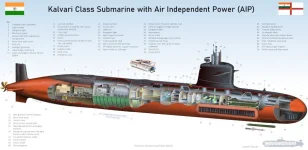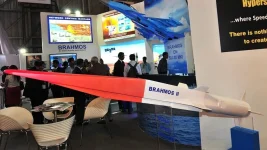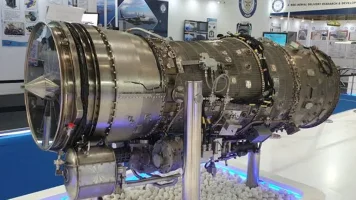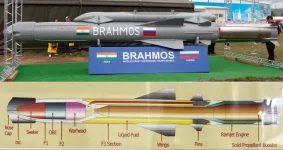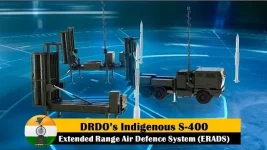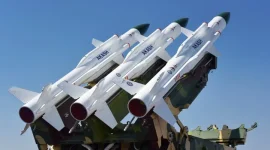- Views: 980
- Replies: 10
India's Defence Research and Development Organisation (DRDO) is significantly advancing the nation's air defence shield through Project Kusha, a high-priority initiative focused on creating an indigenous long-range surface-to-air missile (SAM) system.
A critical aspect of this project, according to released details, is its capability to intercept and neutralise very high-speed anti-ship ballistic missiles (ASBMs) travelling at up to Mach 7 (seven times the speed of sound), representing a major step forward in India's indigenous defence technology.
Named after a revered figure from Indian epics, Project Kusha, also known technically as the Extended Range Air Defence System (ERADS) or Programme Long Range Surface-to-Air Missile (PGLRSAM), is engineered to fill a crucial operational gap.
It will position India's capabilities between its current Medium-Range Surface-to-Air Missile (MR-SAM) system, which has an 80 km range, and the Russian S-400 Triumf system, effective up to 400 km.
The Project Kusha system will feature three distinct interceptor missiles: the M1 with a 150 km range, the M2 reaching 250 km, and the M3 designed for a 350 km engagement range. These are anticipated for deployment with the Indian Air Force (IAF) and the Indian Navy between 2028 and 2029.
A prominent element of Project Kusha is the naval version of its M2 missile, specifically designed to counter ASBMs moving at extreme speeds of Mach 7 (approximately 8,645 kilometres per hour). This capability is increasingly vital for safeguarding naval assets against the sophisticated, high-speed ballistic missiles being developed globally to target warships.
The system's effectiveness will be supported by advanced long-range surveillance and fire control radars. The interceptor missiles themselves will be equipped with Active Electronically Scanned Array (AESA) seekers, complemented by infrared (IR) and radio frequency (RF) guidance systems, ensuring precise targeting and high agility to engage threats effectively.
Currently, the M1 interceptor missile is in the manufacturing stage and is slated for testing in the near future. The development of its prototype is expected to be finalised within 12 to 18 months, which will be followed by extensive user trials lasting between 12 and 36 months.
The M1, which leverages the airframe design of the existing Akash-NG missile, possesses a 150 km range and can achieve speeds of Mach 5.5. It is designed to be effective against a wide array of aerial threats, including stealth fighter aircraft, cruise missiles, unmanned aerial vehicles (drones), and precision-guided munitions. The M2 and M3 interceptors are currently in advanced stages of development.
The M3 missile, with its extended range of 350 km, will be capable of targeting larger, high-value aerial platforms such as Airborne Warning and Control Systems (AWACS) and will also provide a significant short-to-medium-range ballistic missile defence (BMD) capability, contributing to an upper-tier defence layer.
The development of Project Kusha is a collaborative venture, with Bharat Electronics Limited (BEL) serving as a principal development and integration partner. BEL is concentrating on critical subsystems, including the radars and advanced control systems.
A key strength of the Kusha system will be its interoperability with the Indian Air Force’s Integrated Air Command and Control System (IACCS) and the existing S-400 missile systems. This integration facilitates the sharing of radar data and enables coordinated interception strategies, thereby enhancing overall operational efficiency.
Project Kusha is designed to achieve a single-shot kill probability of at least 80%, rising to over 90% when missiles are fired in a salvo, promising a robust addition to India’s multi-layered air defence structure.
The Cabinet Committee on Security officially sanctioned Project Kusha in May 2022, allocating a budget of Rs 21,700 crore (approximately US$2.6 billion) for an initial procurement of five squadrons intended for the IAF.
The project draws upon technological expertise and proven missile structures from India’s established Ballistic Missile Defence programme, aiming to optimise development costs and timelines.
For the Indian Navy, the naval variant's capacity to intercept Mach 7 ASBMs will substantially bolster the protection of its frontline warships against advanced missile threats, supplementing existing naval air defence systems like the Barak-8 and the indigenous Naval Ballistic Missile Defence System.

